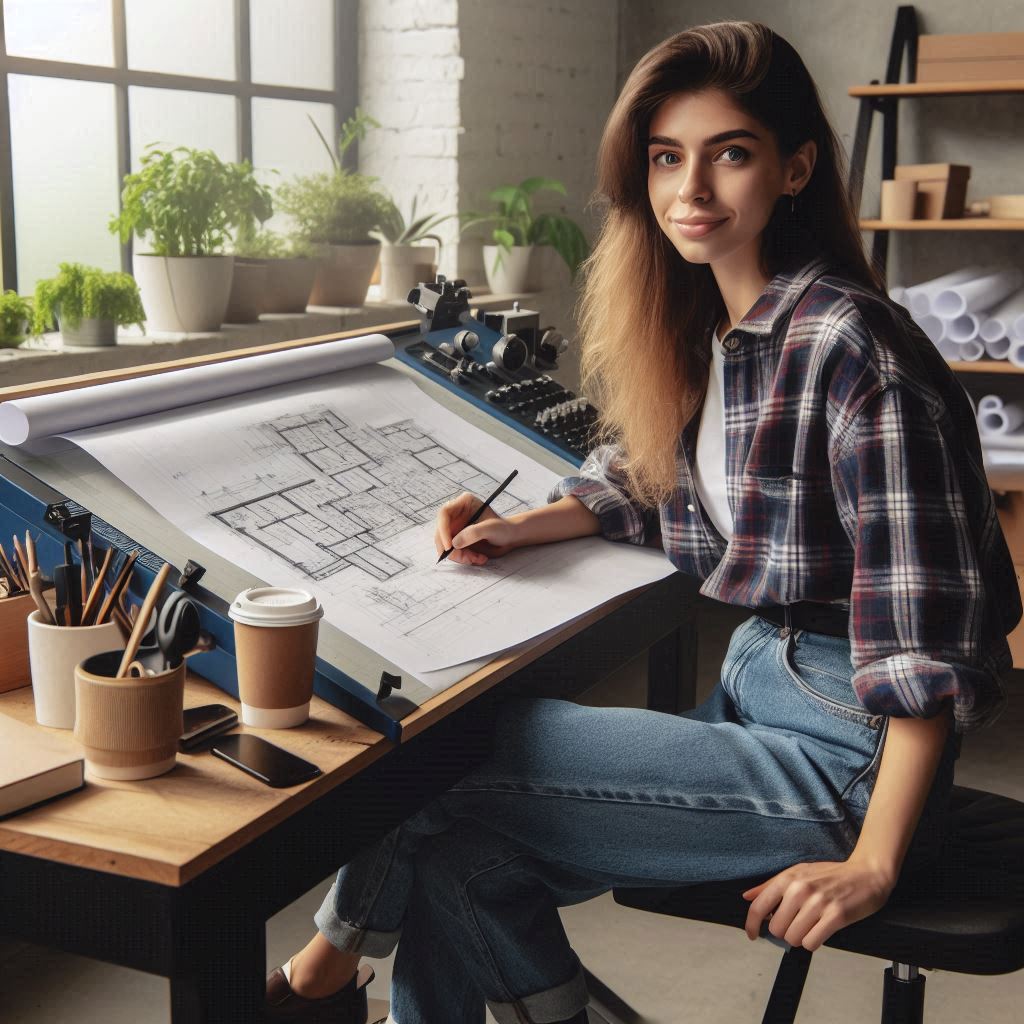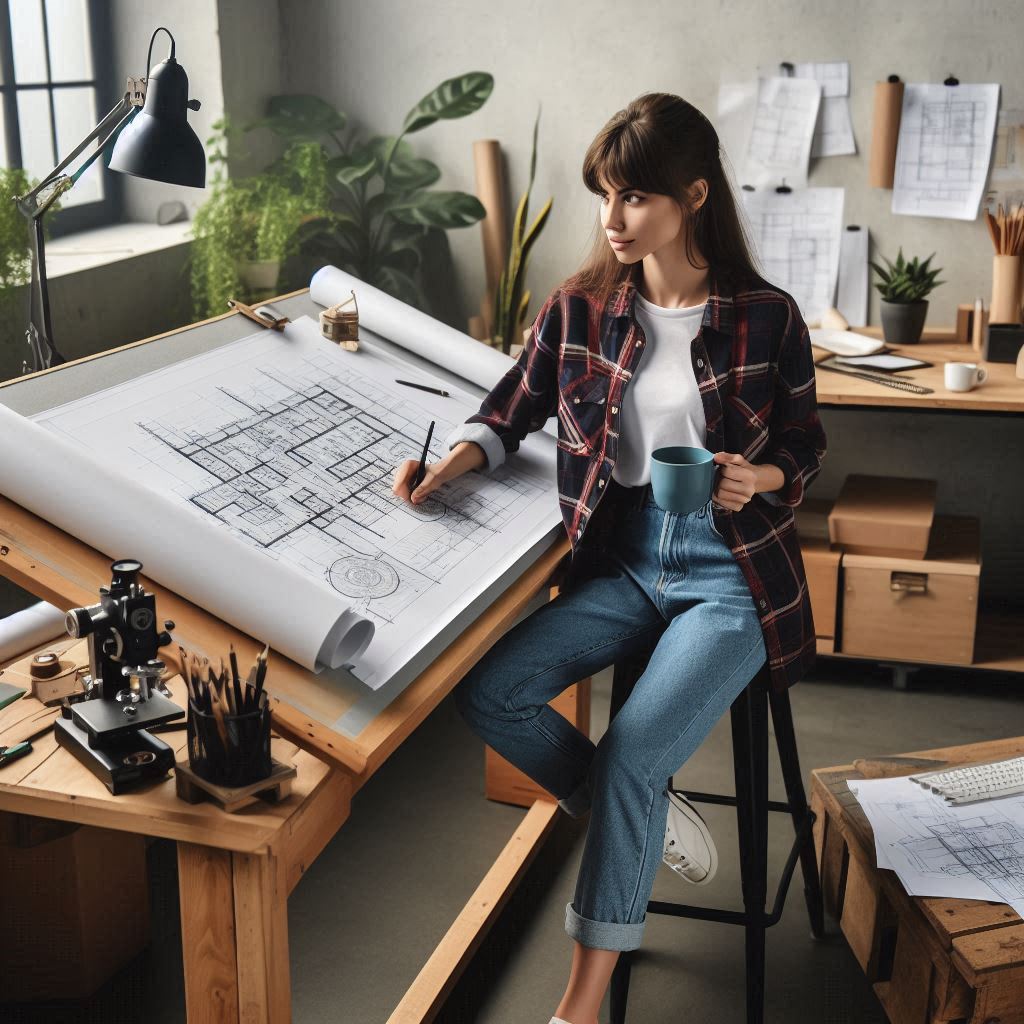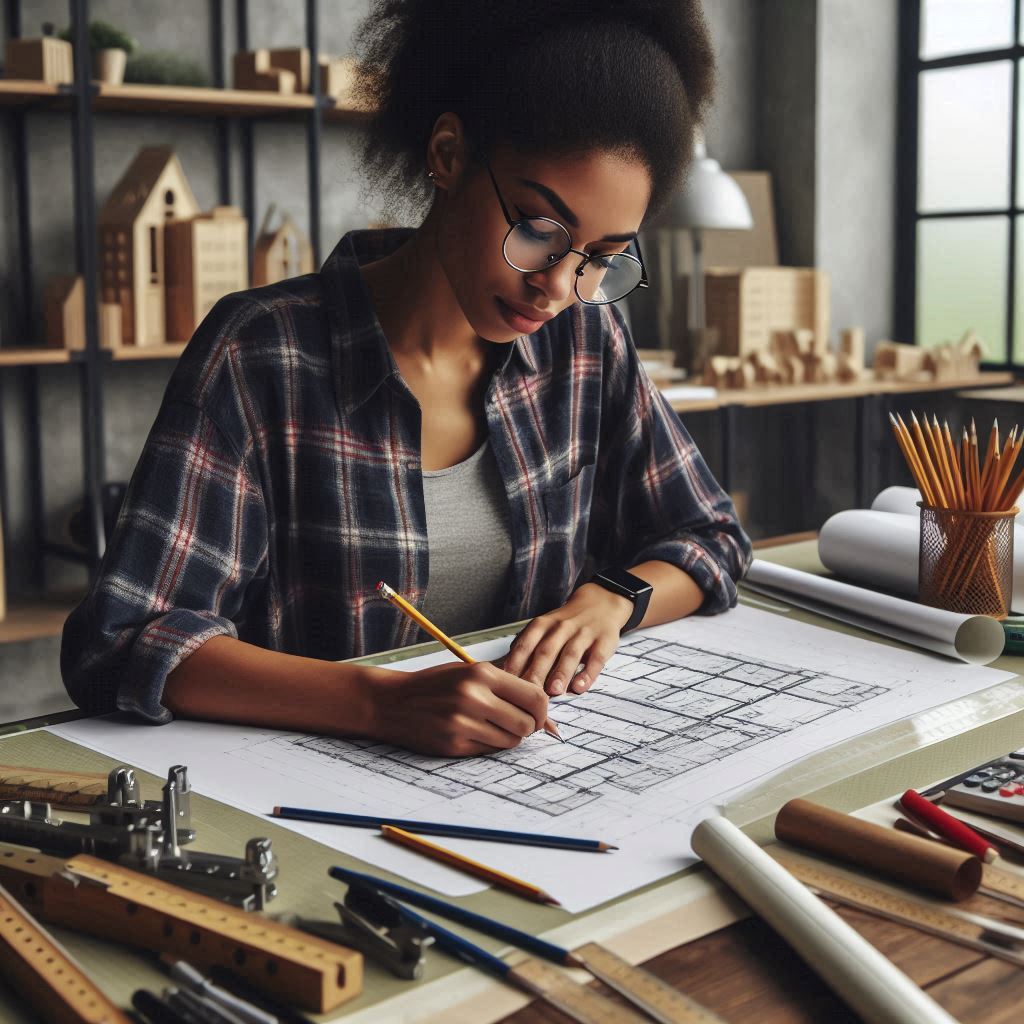Introduction
The field of drafter engineering is undergoing a rapid transformation.
Emerging technologies are reshaping how professionals design and draft plans.
Staying updated on these trends is crucial for any drafter engineer.
It ensures they remain competitive and innovative in their work.
Drafter engineering has always been a dynamic field, blending art and science.
However, the pace of change has accelerated in recent years.
New tools and techniques are constantly emerging, driven by technological advancements and industry demands.
Understanding these future trends is essential for professionals aiming to excel.
One major trend is the integration of Building Information Modeling (BIM) in drafting.
BIM allows for more accurate and detailed project plans.
It also facilitates better collaboration among team members.
This trend is revolutionizing how projects are conceptualized and executed.
Another significant trend is the rise of artificial intelligence (AI) in drafter engineering.
AI-powered software can automate repetitive tasks, increasing efficiency.
It can also provide predictive insights, helping engineers make informed decisions.
This development is streamlining workflows and improving project outcomes.
Virtual reality (VR) and augmented reality (AR) are also making inroads in drafter engineering.
These technologies offer immersive experiences, allowing engineers to visualize projects in 3D.
They enhance understanding and help identify potential issues early.
This leads to more accurate and efficient designs.
Virtual Reality and Augmented Reality in Drafting
How VR and AR Are Being Incorporated into Drafting Tools and Software
Virtual Reality (VR) and Augmented Reality (AR) are making significant inroads into drafting tools and software.
These technologies enhance the way designers visualize and interact with their projects.
VR immerses users in a fully virtual environment, while AR overlays digital information onto the real world.
Incorporating VR into drafting tools allows drafters to step inside their designs.
This immersive experience provides a better understanding of spatial relationships and design details.
It helps in identifying potential issues that might not be obvious in traditional 2D or 3D views.
Benefits of Using VR and AR for Visualization and Design Tasks
The use of VR and AR in drafting offers numerous benefits.
One significant advantage is enhanced visualization.
With VR, stakeholders can take virtual tours of buildings before construction begins.
This capability helps in communicating design intent and gathering feedback early in the process.
AR improves collaboration by allowing team members to visualize changes in real time.
This instant feedback loop speeds up decision-making and reduces misunderstandings.
It also aids in client presentations, making it easier to convey complex design concepts.
Another benefit is improved accuracy in design.
VR and AR allow for precise measurements and detailed inspections.
Drafters can catch errors and inconsistencies early, reducing costly revisions later.
These technologies also support better coordination between different disciplines, ensuring that all aspects of the project align perfectly.
BIM, VR, and AR are revolutionizing the field of drafting and construction.
Proficiency in these technologies is becoming increasingly important for drafters.
As the industry continues to evolve, those who master these tools will be at the forefront of innovation, driving efficiency and excellence in building design and construction.
Read: Biomedical Engineering: Regulatory Affairs
Automation and Artificial Intelligence
Automation and AI are Impacting the Drafting Process
Automation and Artificial Intelligence (AI) are making significant strides in the drafting process.
These technologies are streamlining repetitive tasks and improving accuracy.
Automation tools can handle tasks such as dimensioning, annotation, and even some aspects of design.
This allows drafters to focus on more complex and creative aspects of their work.
AI, in particular, is revolutionizing the drafting process by providing smart design assistance.
AI algorithms can analyze vast amounts of data to suggest design improvements.
They can also predict potential issues and offer solutions before they become problems.
This proactive approach leads to higher-quality designs and reduces the need for revisions.
Potential Benefits of Using AI for Generating Design Alternatives and Improving Efficiency
The integration of AI in drafting offers numerous benefits.
One of the most significant advantages is the ability to generate design alternatives quickly.
AI can evaluate different design parameters and provide multiple options.
This allows drafters and designers to explore various possibilities and choose the best solution.
AI also improves efficiency by automating routine tasks.
For example, AI can automatically generate layouts based on predefined rules and standards.
This not only saves time but also ensures consistency and accuracy.
Additionally, AI can optimize designs for energy efficiency, sustainability, and cost-effectiveness.
By leveraging AI, drafters can produce more innovative and efficient designs.
AI-driven tools provide insights that might not be apparent through manual processes.
This leads to better decision-making and enhances the overall quality of the project.
Furthermore, AI can assist in compliance with building codes and regulations, reducing the risk of errors.
Read: Graduate Studies in Biomedical Engineering
Sustainable Design Practices
How sustainability is becoming a key focus in drafting and engineering
Sustainability is increasingly becoming a central focus in drafting and engineering due to a growing awareness of environmental issues and the need for responsible resource management.
This shift is driven by the urgent need to address climate change, reduce waste, and minimize the ecological footprint of human activities.
As a result, professionals in drafting and engineering are rethinking traditional approaches and integrating sustainable practices into every stage of the design and development process.
One of the primary ways sustainability is influencing drafting and engineering is through the adoption of green building standards and certifications, such as LEED (Leadership in Energy and Environmental Design) and BREEAM (Building Research Establishment Environmental Assessment Method).
These frameworks provide guidelines for constructing environmentally friendly buildings that use resources efficiently and have minimal impact on the natural environment.
Innovative ways in which drafters can incorporate sustainable design principles into their work
Incorporating sustainable design principles into drafting work involves rethinking traditional practices and embracing innovative approaches that prioritize environmental stewardship.
One effective strategy is adopting green building materials.
Drafters can specify the use of materials with low environmental impact, such as recycled content, rapidly renewable resources, or products with low emissions of volatile organic compounds (VOCs).
By prioritizing these materials, the overall sustainability of a project improves, reducing its carbon footprint and promoting healthier indoor environments.
Energy efficiency is another crucial aspect of sustainable design.
Drafters can incorporate advanced insulation techniques, high-performance windows, and energy-efficient HVAC systems into their designs.
Additionally, they can optimize building orientation and incorporate passive solar design principles to maximize natural light and heat, reducing the need for artificial lighting and heating.
This not only lowers energy consumption but also enhances occupant comfort and reduces operational costs.
Water conservation is a vital consideration in sustainable design.
Drafters can specify water-efficient fixtures and appliances, such as low-flow toilets, faucets, and showerheads.
Implementing rainwater harvesting systems and designing landscapes that use native, drought-resistant plants can further minimize water usage.
By reducing water consumption, these measures help preserve this critical resource and lower utility costs.
Read: Networking Tips for Biomedical Engineers

3D Printing in Drafting
The Role of 3D Printing in Prototyping and Manufacturing Processes
3D printing is revolutionizing the way prototypes and final products are created.
This technology allows drafters to bring designs to life with unprecedented speed and accuracy.
It creates physical models directly from digital files, which accelerates the design validation process.
Using 3D printing, drafters can produce detailed scale models of their designs.
This helps in visualizing and testing ideas before committing to full-scale construction.
The ability to iterate quickly and make adjustments in real time is a major advantage.
It reduces the need for traditional, time-consuming manufacturing processes.
Additionally, 3D printing supports customization and complex geometries that were previously challenging to achieve.
Drafters can now explore innovative design possibilities without worrying about traditional manufacturing constraints.
This flexibility allows for more creative and functional design solutions.
How 3D Printing Technology is Changing the Way Drafters Bring Designs to Life
3D printing technology has transformed the role of drafters in the design process.
By creating accurate physical prototypes, drafters can identify design issues early on.
This reduces costly revisions and improves the overall design quality.
With 3D printing, drafters can produce prototypes quickly and affordably.
This rapid prototyping capability enables faster decision-making and refinement of designs.
It also enhances collaboration with clients by providing tangible models to discuss and review.
The integration of 3D printing into drafting workflows is becoming increasingly common.
Drafters proficient in this technology can offer innovative solutions and add value to projects.
Their ability to quickly produce and test prototypes improves project efficiency and client satisfaction.
Read: Biomedical Engineering: Impact on Public Health
Collaborative Design Tools and Platforms
The Rise of Collaborative Tools and Platforms for Drafters
The rise of collaborative tools and platforms is revolutionizing how drafters work together remotely.
These tools enable team members to access, edit, and share BIM models in real-time.
This fosters a collaborative environment where feedback can be incorporated instantly.
Real-time collaboration improves efficiency by allowing drafters to address issues as they arise.
It also enhances communication among team members, reducing the need for extensive meetings and email exchanges.
As a result, project timelines are shortened, and the quality of the final output improves.
Collaborative platforms like cloud-based BIM solutions ensure that all team members are working with the most current data.
This minimizes the risk of discrepancies and ensures that everyone is aligned with the project’s goals.
These platforms also facilitate seamless integration with other project management tools, streamlining the workflow further.
The benefits of real-time collaboration in improving efficiency and communication among team members
Real-time collaboration is a game-changer for modern teams, enhancing both efficiency and communication in ways that were previously unattainable.
This approach allows team members to work together instantaneously, regardless of their physical location, breaking down traditional barriers to effective teamwork.
Imagine a scenario where a team is working on a complex project.
Real-time collaboration tools enable members to see changes and updates as they happen.
This immediacy reduces the delays often caused by asynchronous communication, where messages and updates can linger in inboxes and be overlooked.
With everyone on the same page simultaneously, decisions can be made faster and more accurately.
This direct, instant communication streamlines workflows and eliminates the need for lengthy email threads or redundant meetings.
For instance, if a design team is brainstorming ideas, they can instantly share sketches, feedback, and suggestions, refining concepts in real-time.
This speeds up the iterative process, allowing for quicker adjustments and iterations.
Integration of Building Information Modeling (BIM)
How BIM is Revolutionizing the Way Buildings are Designed and Constructed
Building Information Modeling (BIM) is revolutionizing the architecture, engineering, and construction (AEC) industry by transforming traditional design and construction practices.
BIM integrates all physical and functional aspects of a building into a single digital model.
This integration allows for a comprehensive view of the project, enhancing accuracy and efficiency from the early planning stages to project completion.
One of the primary benefits of BIM is its ability to create detailed 3D representations of building components.
This 3D modeling helps stakeholders visualize the project and detect potential design conflicts before construction begins.
By identifying issues early, BIM reduces the likelihood of costly changes and errors during the construction phase.
BIM also facilitates improved coordination among architects, engineers, and contractors.
With all parties working from the same digital model, communication becomes clearer, and misunderstandings are minimized.
This collaborative approach ensures that everyone involved has access to the most up-to-date information, leading to smoother project execution.
The simulation capabilities of BIM allow designers to explore different design options and assess their impact on the project.
This flexibility enables informed decision-making and fosters innovative solutions.
Additionally, BIM aids in precise cost estimation and budgeting by providing detailed information on materials, quantities, and construction schedules.
Importance of Drafters Being Proficient in BIM Software for Future Projects
As BIM continues to gain prominence in the AEC industry, proficiency in BIM software is becoming increasingly crucial for drafters.
Drafters who are skilled in BIM can create accurate and detailed models that significantly enhance project outcomes.
Their expertise ensures that designs are not only feasible but also adhere to regulatory standards and project requirements.
Being proficient in BIM software opens up numerous career opportunities for drafters.
Many employers now view BIM knowledge as a standard qualification.
Drafters with BIM skills can effectively contribute to project teams, manage complex designs, and communicate ideas clearly with other professionals.
This capability positions them as valuable assets in a competitive job market.
Furthermore, BIM proficiency allows drafters to stay ahead in an industry that is rapidly evolving.
As more projects adopt BIM technology, the demand for skilled professionals who can utilize this software effectively will continue to grow.
Drafters who master BIM will be well-prepared to handle future projects that require advanced modeling and collaboration.
Conclusion
As we explored, the future of drafter engineering is deeply intertwined with technological advancements.
The rise of Building Information Modeling (BIM) has revolutionized how drafters approach project design and management.
This technology streamlines collaboration and enhances accuracy, making it essential for modern drafters.
Similarly, advancements in 3D printing and virtual reality are reshaping drafting practices, offering new ways to visualize and prototype designs.
The integration of artificial intelligence (AI) and machine learning is another critical trend.
These technologies automate routine tasks and improve decision-making processes.
Drafters who embrace these innovations will find themselves better equipped to handle complex projects efficiently.
Staying updated with software developments and automation tools will be crucial for maintaining a competitive edge.
Furthermore, sustainable design practices are becoming increasingly significant.
As environmental concerns grow, drafters must incorporate eco-friendly materials and energy-efficient solutions into their designs.
This shift not only meets regulatory requirements but also aligns with industry trends toward sustainability.
In summary, the field of drafter engineering is evolving rapidly.
Embracing new technologies and methodologies will be key to staying relevant.
Drafters must continually seek knowledge and adapt to these emerging trends to excel in their careers.
By remaining informed and proactive, drafters can navigate the changing landscape effectively and seize new opportunities as they arise.
[E-Books for Sale]
The Big Book of 500 High-Paying Jobs in America: Unlock Your Earning Potential
$19.99 • 500 High-Paying Jobs • 330 pages
Explore 500 high-paying jobs in America and learn how to boost your career, earn more, and achieve success!
See All 500 High-Paying Jobs of this E-Book
1001 Professions Without a Degree: High-Paying American Jobs You Can Start Now
$19.99 • 1001 Professions Without a Degree • 174 pages
Discover 1001 high-paying jobs without a degree! Unlock career tips, skills, and success strategies for just $19.99!




